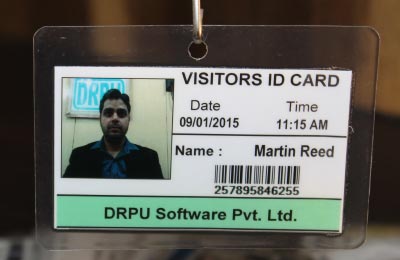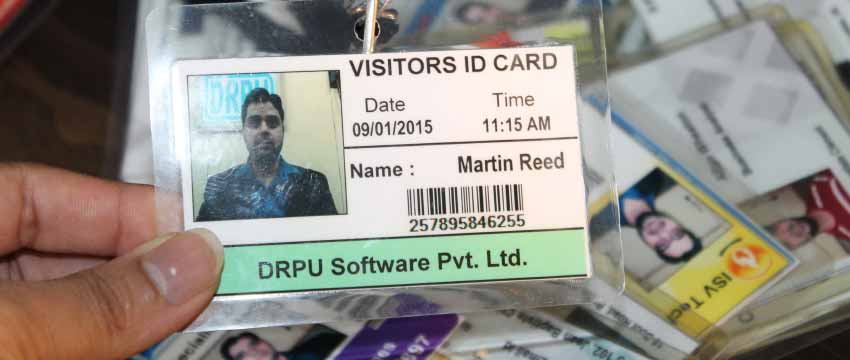Date: 📆 11/07/2023

-
The purpose of a visitor ID card is to distinguish visitors from regular employees or residents and provide them with a temporary form of identification during their visit. These cards typically contain essential information about the visitor, such as their name, photograph, purpose of visit, and the duration of their authorized stay. In some cases, additional details like the organization being visited or a unique identification number may be included.
-
Visitor ID cards can be designed and issued in different formats. They may be simple paper-based badges with basic information printed on them, or they can be more sophisticated cards with advanced security features. Some visitor ID cards may include barcode or QR code technology, allowing for easy scanning and tracking of visitors' movements within the premises.
-
The process of issuing a visitor ID card typically involves the visitor providing their identification documents, such as a driver's license or passport, to the facility's staff. The staff then verifies the visitor's identity, records their information, and generates the visitor ID card. Depending on the organization's policies and security requirements, visitors may need to return the ID card upon leaving the facility or event.
-
Visitor ID cards serve several important purposes. Firstly, they help enhance security by enabling personnel to quickly identify authorized visitors and differentiate them from potential intruders. By prominently displaying the visitor's photograph and relevant information, it becomes easier for security personnel to identify individuals who may not have legitimate reasons to be on the premises.
-
Secondly, visitor ID cards help in maintaining an accurate record of visitors, allowing for better management and tracking of people within the facility. This information can be used for administrative purposes, visitor statistics, and even emergency evacuation procedures if required.
-
Lastly, visitor ID cards contribute to a professional and organized environment. By providing visitors with a designated form of identification, it establishes a sense of order and control. It also helps visitors feel more welcome and reassured, as they are easily identifiable and can be assisted more efficiently if needed.
Information Included in a Visitor ID Card
A visitor ID card should contain essential information that helps in identifying the visitor, verifying their purpose of visit, and ensuring security within a facility. While specific requirements may vary depending on the organization and the level of security needed, here is a detailed explanation of the information that is commonly included on a visitor ID card:

-
Visitor's Photograph:
Including a recent photograph of the visitor helps in visual identification. The photograph should be clear, of high quality, and sufficiently large to enable easy recognition. It is often placed on the ID card near the visitor's name.
-
Date and Time of Visit:
The visitor ID card should display the date and time of the visitor's entry or check-in. This information helps in tracking the duration of the visit and ensures that visitors are aware of any time restrictions or access limitations.
-
Visitor's Full Name:
The visitor's full name should be prominently displayed on the ID card. This allows for quick identification and helps staff members address visitors by their proper names.
-
Visitor's Unique Identification Number:
Some organizations assign a unique identification number to each visitor for internal tracking and reference purposes. This number can be printed or encoded as a barcode or QR code on the ID card to facilitate quick scanning and retrieval of visitor information from a database.
-
Expiry Date and Time:
For visitors with limited access privileges, such as contractors or temporary personnel, an expiry date and time should be indicated on the ID card. This ensures that visitors are aware of their authorized duration of stay and prompts them to return the ID card upon departure.
-
Purpose of Visit:
It is important to include the purpose of the visitor's visit on the ID card. This may be a general description, such as "Business Meeting" or "Conference Attendee," or it can be more specific, like the name of the event or department being visited. This information assists security personnel and staff members in verifying the visitor's intentions and directing them to the correct location.
-
Organization or Host Name:
If the visitor is associated with a specific organization or is visiting at the invitation of a host, it is beneficial to include the name of the organization or host on the ID card. This helps establish the visitor's affiliation and assists staff members in providing access permissions.
-
Emergency Contact Information:
In the case of emergencies, it can be helpful to include emergency contact information on the visitor ID card. This may include a designated contact person, phone number, or email address that can be used to reach out to the visitor's emergency contact if required.
-
Security Features:
Depending on the level of security required, visitor ID cards may incorporate various security features to prevent counterfeiting and unauthorized duplication. These features can include holograms, watermarks, microprinting, UV ink, or other advanced security measures specific to the organization's needs.
It is worth noting that the design and layout of a visitor ID card can vary depending on the organization's preferences, branding guidelines, and available resources. However, the above-mentioned information serves as a foundation for creating an effective visitor ID card that ensures proper identification, enhances security, and facilitates efficient visitor management within a facility.